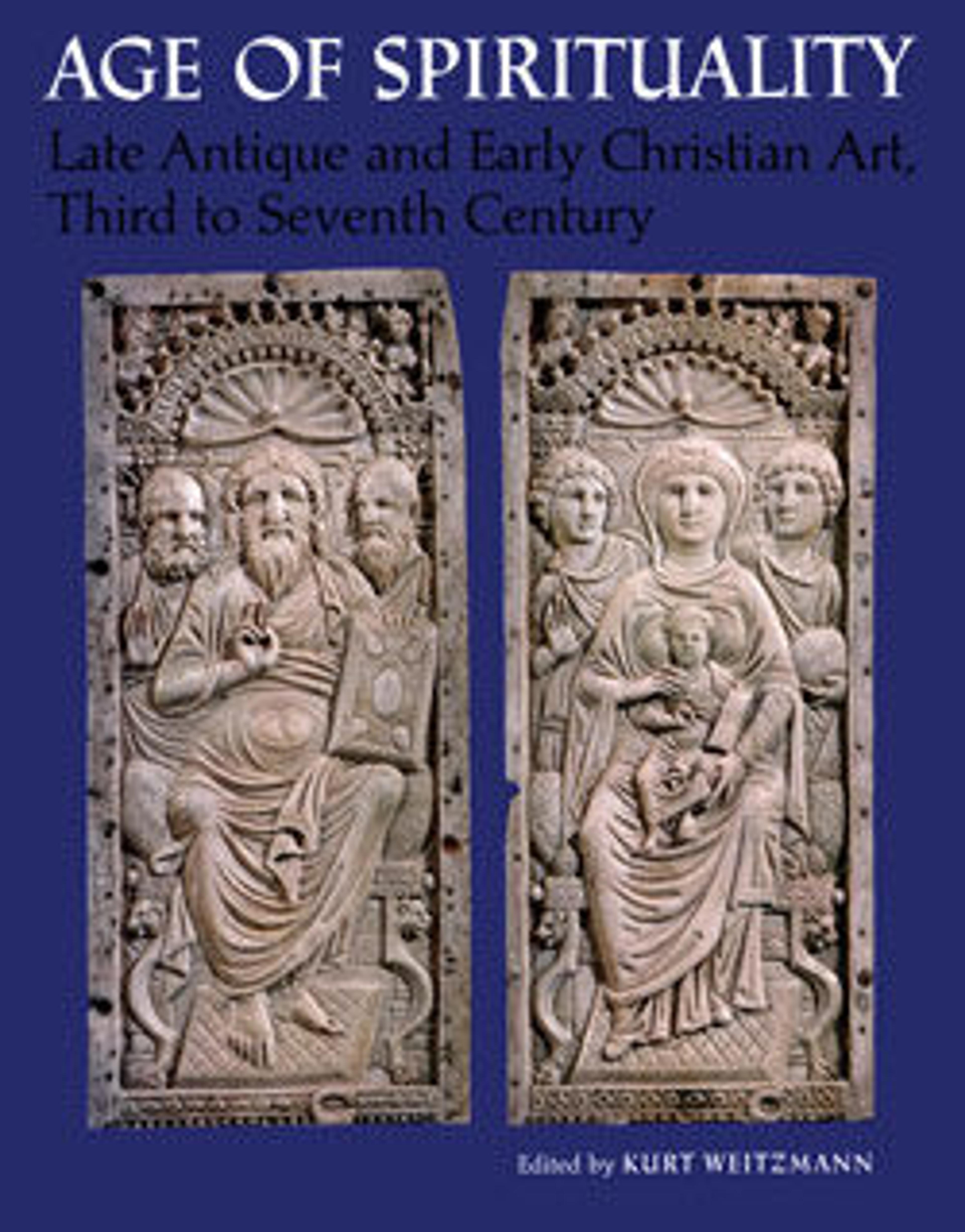Gold glass base of a beaker
Colorless; gold foil; blue and black pigment.
Fragment from bottom of vessel, comprising two layers: the lower base disk is thinner and folded down at edge to form a foot ring; the gold foil was applied to the upper surface with details added in colored paint or enamel; the upper paraison is thicker and slightly concave, fused onto the base disk, sealing in the decoration.
The decoration is viewed from inside the vessel; roundel framed by a thick gold band, a charioteer stands in his quadriga, holding a victory wreath in his outstretched right hand; behind him is his blue-colored headdress; the horses wear plumes, partially in blue, black harnesses with ornaments in blue across their chests, and blue leg wraps; above to either side of charioteer in gold letters are the words DEMET - ER NICA; below the ground line a section of the disk is filled with gold foil, part of which has been removed to leave the word TRASINICVS in reserve.
Broken with weathered edges on all sides, and some chipping and cracking on base disk; few bubbles; dulling, faint iridescent weathering, and discoloration of decoration between the layers of glass.
This gold glass fragment depicts a victorious driver in his quadriga (four-horse chariot). Above is the inscription "Demeter nica" (Demeter win!), and below is the charioteer’s name, Trasinicus.
Fragment from bottom of vessel, comprising two layers: the lower base disk is thinner and folded down at edge to form a foot ring; the gold foil was applied to the upper surface with details added in colored paint or enamel; the upper paraison is thicker and slightly concave, fused onto the base disk, sealing in the decoration.
The decoration is viewed from inside the vessel; roundel framed by a thick gold band, a charioteer stands in his quadriga, holding a victory wreath in his outstretched right hand; behind him is his blue-colored headdress; the horses wear plumes, partially in blue, black harnesses with ornaments in blue across their chests, and blue leg wraps; above to either side of charioteer in gold letters are the words DEMET - ER NICA; below the ground line a section of the disk is filled with gold foil, part of which has been removed to leave the word TRASINICVS in reserve.
Broken with weathered edges on all sides, and some chipping and cracking on base disk; few bubbles; dulling, faint iridescent weathering, and discoloration of decoration between the layers of glass.
This gold glass fragment depicts a victorious driver in his quadriga (four-horse chariot). Above is the inscription "Demeter nica" (Demeter win!), and below is the charioteer’s name, Trasinicus.
Artwork Details
- Title: Gold glass base of a beaker
- Period: Late Imperial
- Date: 3rd century CE
- Culture: Roman
- Medium: Glass, gold; blown with applied gold foil
- Dimensions: Overall: 3 7/16 x 3 1/4 x 3/16 in. (8.8 x 8.2 x 0.5 cm)
- Classification: Glass
- Credit Line: Fletcher Fund, 1928
- Object Number: 28.57.24
- Curatorial Department: Greek and Roman Art
More Artwork
Research Resources
The Met provides unparalleled resources for research and welcomes an international community of students and scholars. The Met's Open Access API is where creators and researchers can connect to the The Met collection. Open Access data and public domain images are available for unrestricted commercial and noncommercial use without permission or fee.
To request images under copyright and other restrictions, please use this Image Request form.
Feedback
We continue to research and examine historical and cultural context for objects in The Met collection. If you have comments or questions about this object record, please contact us using the form below. The Museum looks forward to receiving your comments.
